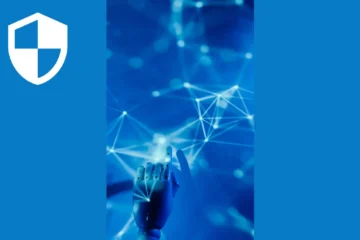Table of Contents
Digital Security Controls

In today’s digital world, the prevalence of cyber threats poses significant challenges to individuals and organizations alike. Cybercriminals continuously evolve their tactics, exploiting vulnerabilities in digital environments to gain unauthorized access, steal sensitive data, and disrupt operations. The importance of robust digital security controls cannot be overstated, as they play a crucial role in mitigating these threats. In this blog, we will explore some of the top cybersecurity threats and how digital security controls help defend against them.
Phishing Attacks
Phishing attacks continue to be one of the most common and successful cyber dangers. Cybercriminals use deceptive emails, messages, or websites to trick users into divulging sensitive information, such as login credentials and financial details. Digital security controls combat phishing through:
- Email filtering and content analysis to identify and block phishing emails.
- AI-driven anomaly detection to spot unusual behavior in email communications.
- Employee training and awareness programs to educate users about phishing red flags.
Ransomware
Ransomware is a sort of virus that encrypts the data of a victim, making it unavailable until a ransom is paid. To combat ransomware, digital security controls employ:
- AI-powered behavior analysis to detect suspicious activities indicative of ransomware.
- Regular data backups to ensure data recovery without paying the ransom.
- Network segmentation to limit the spread of ransomware across systems.
Insider Threats
Insider threats originate from within an organization when employees or trusted individuals intentionally or unintentionally compromise security. Digital security controls address insider threats through:
- To detect anomalous behaviour patterns, use User and Entity Behaviour Analytics (UEBA).
- Role-based access controls to limit access to sensitive data based on job roles.
- Strict employee onboarding and termination processes to revoke access promptly.
Distributed Denial of Service (DDoS) Attacks
DDoS attacks overwhelm a target’s servers or networks, causing disruptions and downtime. To counter DDoS attacks, digital security controls use:
- To prevent malicious traffic, use traffic filtering and rate limitation.
- DDoS protection services that redirect traffic through scrubbing centers to filter out malicious requests.
- Intelligent load balancing to distribute traffic efficiently during an attack.
Zero-Day Exploits
Zero-day exploits target unknown vulnerabilities in software before vendors release patches. Digital security controls address zero-day exploits through:
- Intrusion Detection Systems (IDS) and Intrusion Prevention Systems (IPS) that identify and block suspicious network activity.
- Continuous monitoring and prompt application of software updates to reduce the window of vulnerability.
Data Breaches
Data breaches involve unauthorized access to sensitive data, leading to potential leaks or theft. Digital security controls protect against data breaches by:
- Data encryption to secure sensitive information in transit and at rest.
- Multi-factor authentication adds another degree of security to user accounts.
- Robust access controls to limit data access to authorized individuals only.
Conclusion
The ever-evolving landscape of cyber threats demands a proactive and multi-layered approach to digital security. Digital security controls are crucial in safeguarding against a wide range of cybersecurity threats. By combining advanced technologies such as AI-driven threat detection, behavioral analysis, and robust access controls, organizations can fortify their defenses and stay ahead in the ongoing battle against cyber adversaries. Embracing digital security controls is not only a prudent decision but a strategic imperative to protect valuable assets, sensitive data, and maintain trust with customers and stakeholders in an increasingly interconnected world.



